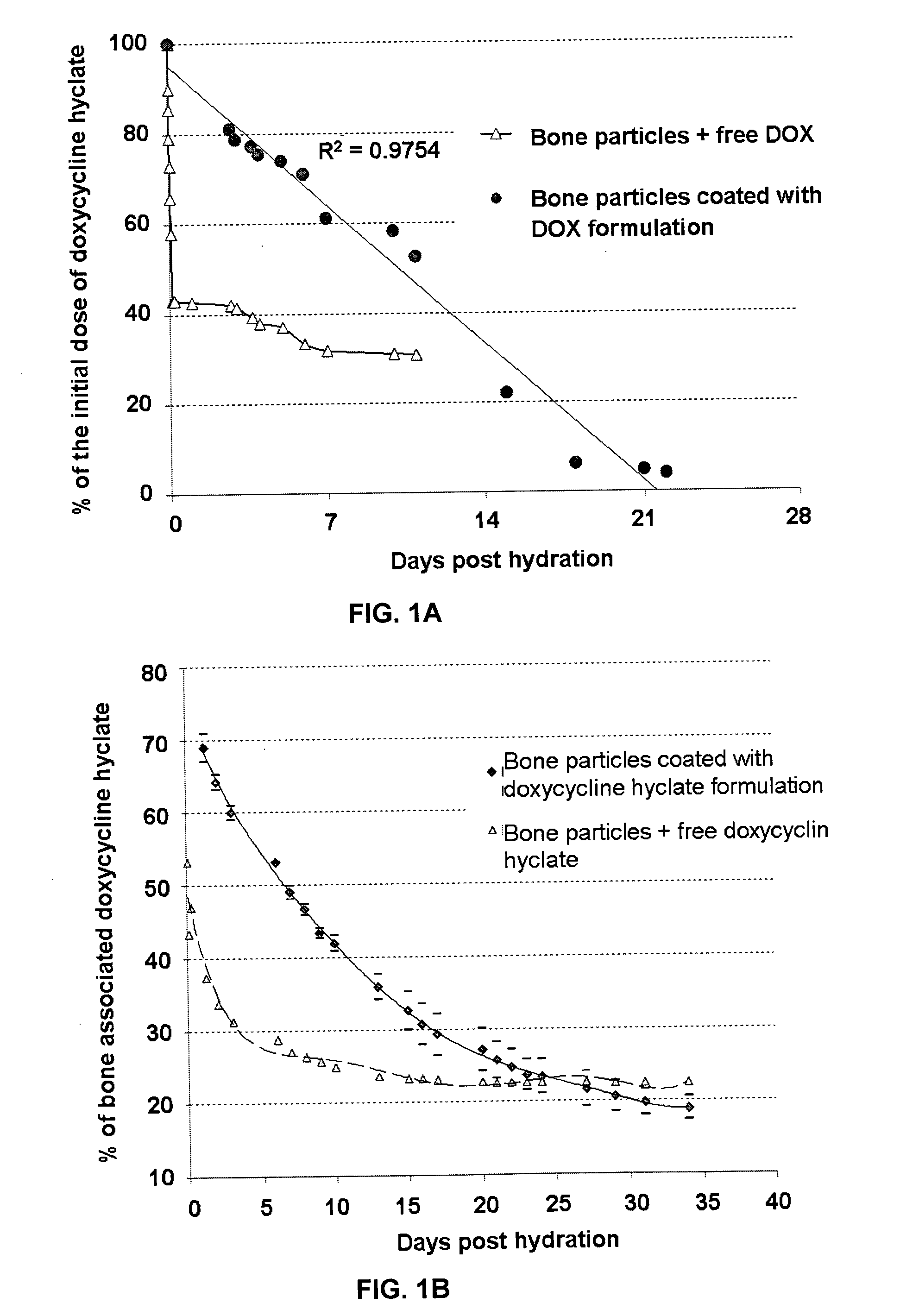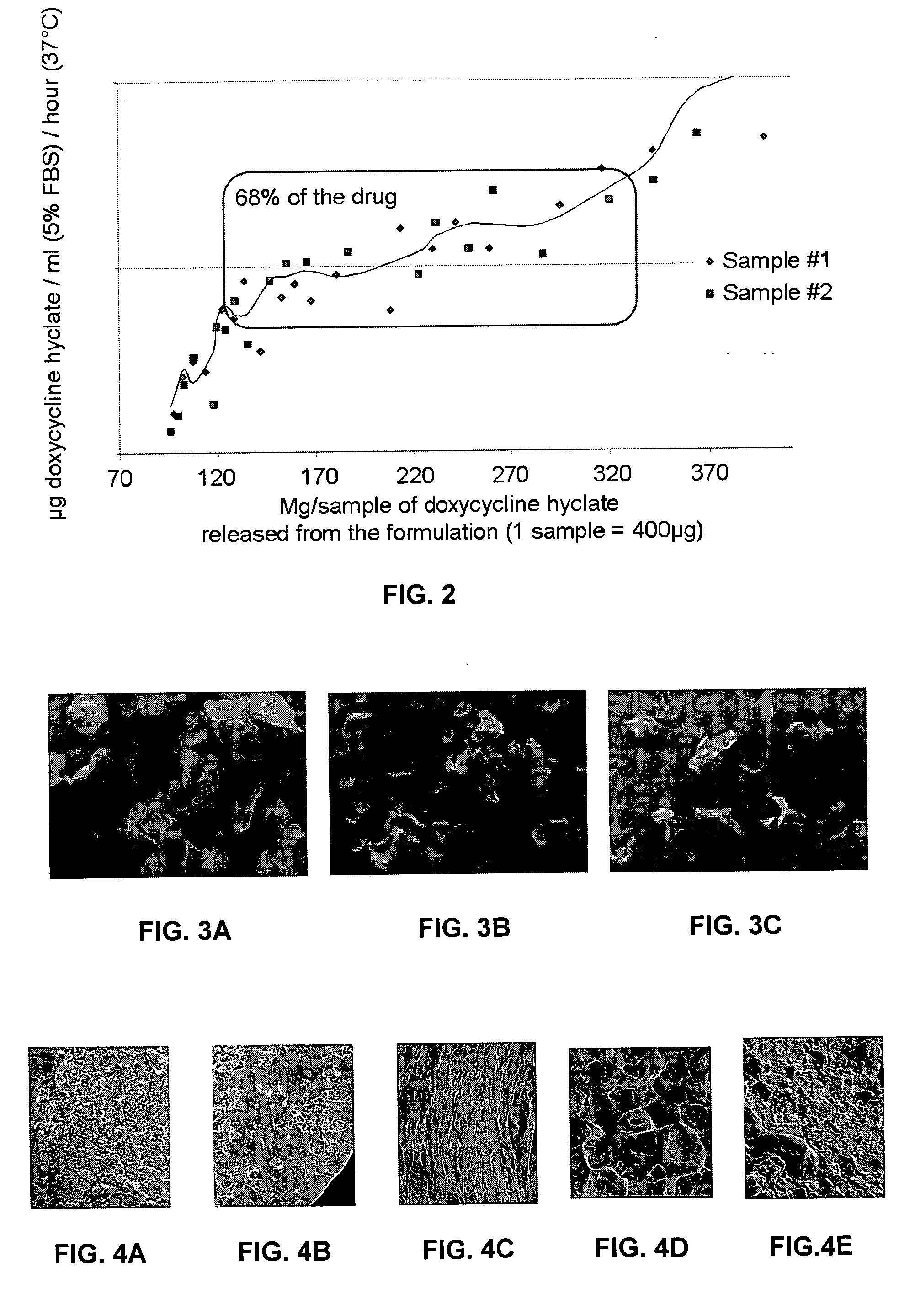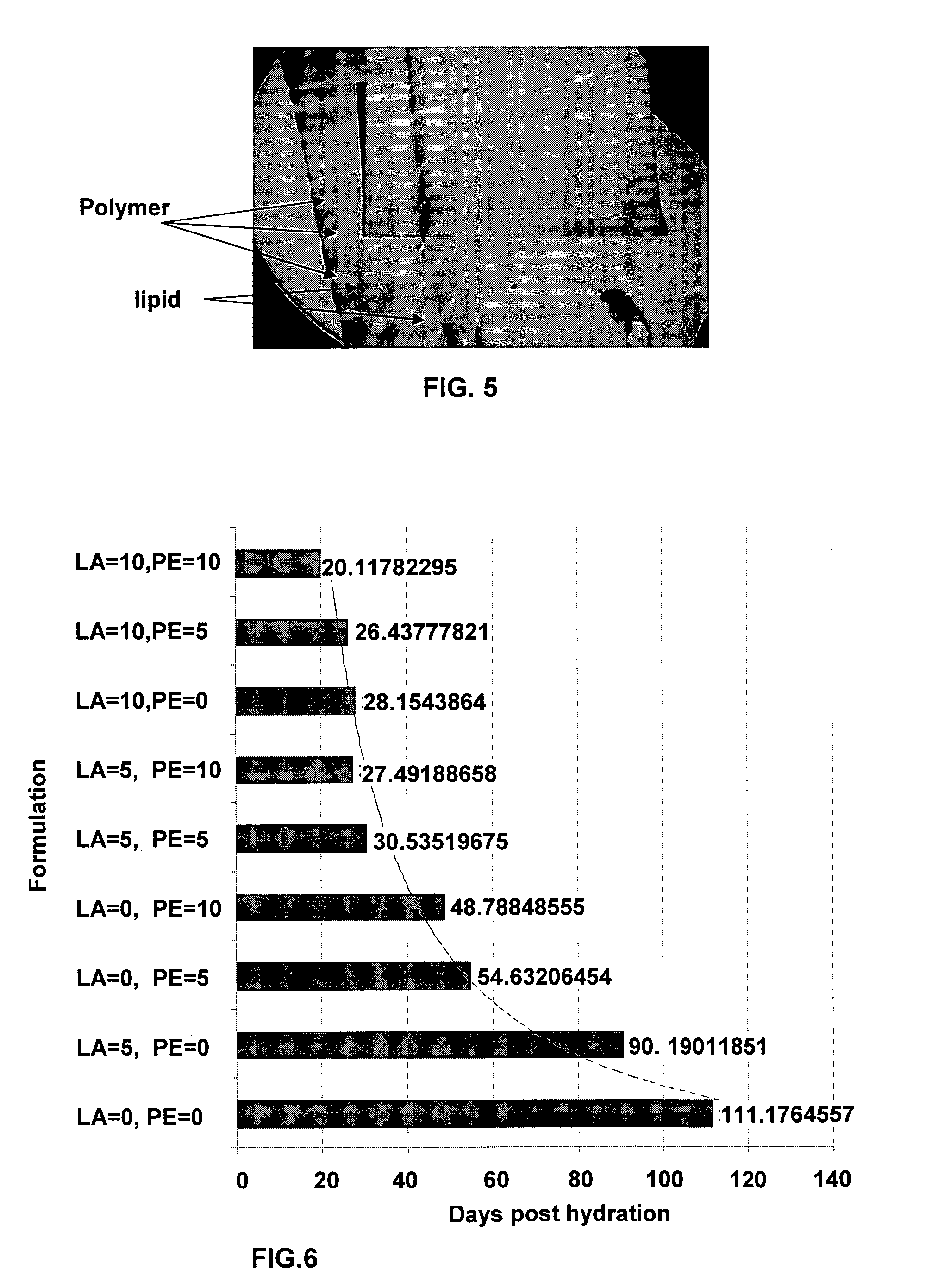Sustained-release drug carrier composition
a drug carrier and suspension technology, applied in the direction of drug compositions, antibacterial agents, prostheses, etc., can solve the problems of slow biodegradability of polymers, not yet being successfully introduced into clinical practice, and immediate and delayed infection, so as to achieve less rigidity, less order, and the release rate of drugs can be further controlled
- Summary
- Abstract
- Description
- Claims
- Application Information
AI Technical Summary
Benefits of technology
Problems solved by technology
Method used
Image
Examples
example 1
Platform Technology for Production of Drug Carrier Compositions
Overview
[0233]To produce lipid-saturated polymer matrices, two mixtures are created.
1. A biodegradable polymer and a sterol and / or phospholipid component are mixed with a volatile organic solvent, which is mixed to yield a solution or suspension of lipid-saturated polymer matrix, as measured by its differential scanning calorimetric (DSC) profile.
2. The active agent and a phospholipid component are mixed with a second volatile organic solvent to yield a second solution or suspension.
3. The two solutions or suspensions are combined and mixed until equilibrium is reached; the organic solvents are then evaporated, yielding a drug-containing, lipid-saturated polymer matrix.
Exemplary Protocol
I. Preparation of First Solution
[0234]Polymer (PLGA, PGA, PLA, or a combination thereof) and a polar lipid such as a sterol (e.g. cholesterol) and / or alpha- or gamma tocopherol and / or phosphatidyl ethanolamine are mixed into a volatile or...
example 2
Preparation of Doxycycline Hyclate-Bone Particles Filler Formulation for Treatment of Bone Infection (Osteomyelitis or Filling of Bone Effects Caused by Trauma)
I. Preparation of First Solution
[0247]The following materials are mixed into ethyl acetate:[0248]50-75 KDa PLGA (poly(lactic-co-glycolic acid, 85:15 ratio))[0249]Cholesterol—50%-100% w / w vs. PLGA.
[0250]The mixture is mixed. The entire process is performed at room temperature. A fat-polymer combination matrix is thus obtained.
II. Preparation of Second Solution
[0251]The following materials are mixed with a volatile organic solvent (methanol and ethyl acetate)[0252]a. Active compound,—an antibiotic Doxycycline hyclate[0253]b. A phosphatidylcholine,—1,2-distearoyl-sn-glycero-3-phosphocholine (DSPC) present as 300-700% w / w vs. PLGA.
The mixture is mixed well. The entire process is conducted at room temperature. When phosphatidylcholine having long saturated fatty chains is used (e.g. DSPC) the process is typically performed at high...
example 3
Preparation of 1,3-Thiabendazole (TBZ) Formulation
Stock Solutions:
[0265]a. PLGA / ethyl acetate, 300 mg / ml (SS1, 1 ml): (i) Weight 300 mg PLGA (50:50; Sigma) into 4 ml glass vile, (ii) add 1 ml ethyl acetate, (iii) vortex for 5 minutes, (iv) Stir for 12-18 hours at room temperature (RT), (v) confirm that the polymer grains are totally dissolved, (vi) close under N2, wrap with aluminum foil and keep it at RT, (vii) the solution is good for 1 month.
b. Cholesterol / ethyl acetate, 30 mg / ml (SS2, 1 ml): (i) Weight 30 mg cholesterol (Sigma 99%) into 4 ml glass vile, (ii) add 1 ml of ethyl acetate, (iii) vortex for 5 minutes at RT, (iv) confirm that the cholesterol is totally dissolved. Otherwise, continue to vortex for more 2 minutes, (v) close under N2, wrap with aluminum foil and keep it at RT, (vi) the solution is good for 1 month.
c. Ethyl acetate:Methanol 1:1 (SS2.1): (i) Put 10 ml of Ethyl acetate into a 20 ml glass vile, (ii) add 10 ml methanol into the same vile, (iii) vortex for 20 s...
PUM
| Property | Measurement | Unit |
|---|---|---|
| time period | aaaaa | aaaaa |
| mass | aaaaa | aaaaa |
| gel-to-liquid-crystal transition temperature | aaaaa | aaaaa |
Abstract
Description
Claims
Application Information
 Login to view more
Login to view more - R&D Engineer
- R&D Manager
- IP Professional
- Industry Leading Data Capabilities
- Powerful AI technology
- Patent DNA Extraction
Browse by: Latest US Patents, China's latest patents, Technical Efficacy Thesaurus, Application Domain, Technology Topic.
© 2024 PatSnap. All rights reserved.Legal|Privacy policy|Modern Slavery Act Transparency Statement|Sitemap



